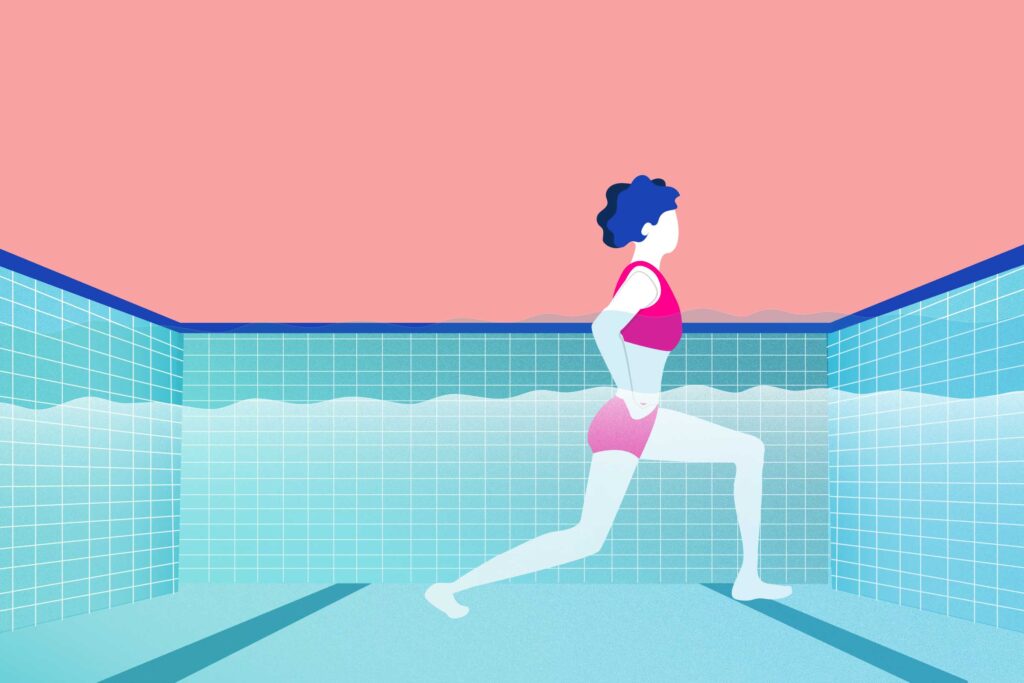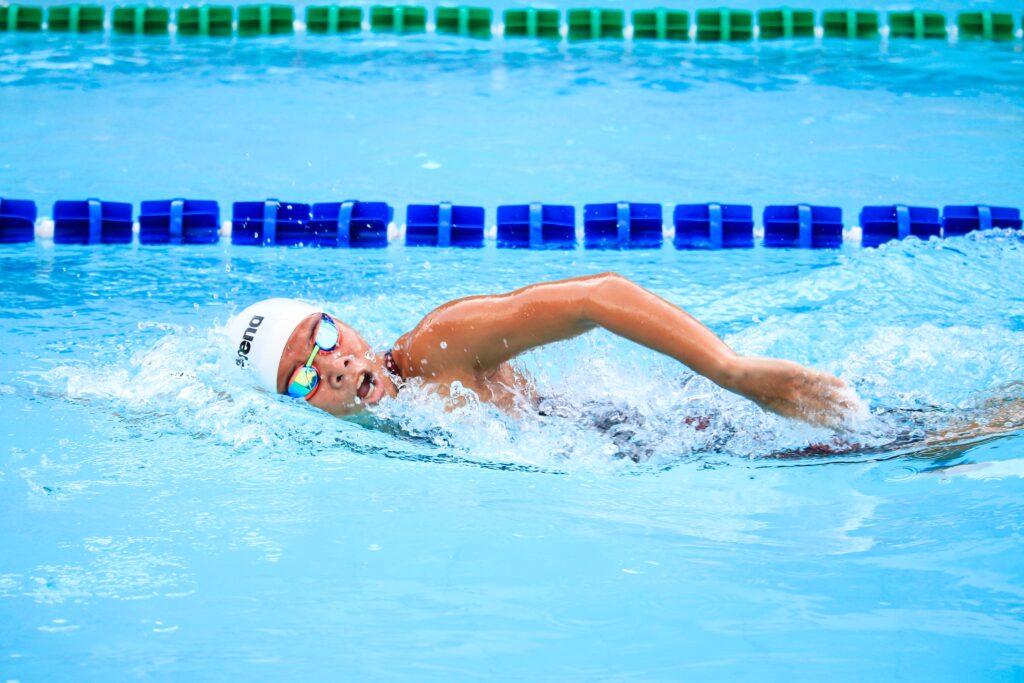The ability to swim is not just a lifesaving skill; it’s also an avenue to health, exercise, and even social interaction. However, many adults find themselves shackled by a fear of water, colloquially known as hydrophobia.
This apprehension can make the thought of getting into a pool feel like a terrifying ordeal rather than an enjoyable experience. The good news is that it’s never too late to conquer this fear and embrace the benefits of swimming. In this article, we delve into actionable tips and techniques to help adults overcome hydrophobia and achieve swimming success.
Understanding Hydrophobia
Before attempting to become Swim Masters, it’s essential to understand what hydrophobia is and how it manifests. Hydrophobia is an intense, often irrational fear of water, particularly large bodies of water like lakes, oceans, and even swimming pools. This fear can stem from various sources such as traumatic experiences, negative reinforcement, or cultural beliefs. Recognizing the source of your fear is the first step towards conquering it.
Physical Symptoms
- Rapid heartbeat
- Sweating
- Trembling
- Nausea
Emotional Reactions
- Panic attacks
- Avoidance behavior
- Extreme stress at the thought of water
Preparing for the First Dip
Psychological Preparedness

- Identify Triggers: Understanding what specific elements of water or swimming trigger your fear can help you approach it in a controlled manner.
- Professional Help: Don’t underestimate the value of talking to a therapist who can employ various techniques to address your phobia.
- Visualization: Picture yourself swimming confidently. Visualization can be a potent tool in preparing your mind for a new experience.
Physical Preparedness
- Medical Check-Up: Always consult a healthcare provider before taking up a physically demanding activity like swimming.
- Swim Gear: Invest in appropriate swim gear such as goggles, swim caps, and a well-fitted swimsuit to enhance your comfort and confidence.
Baby Steps into the Water
Choose the Right Environment
Select a calm and less crowded environment for your first foray into water. Pools specifically designed for beginners often have shallow sections, which are ideal for adults looking to overcome their fears.
Bring a Companion
Having a friend or family member with you can act as a morale booster. Make sure this person is comfortable in the water and understands your situation.
Shallow Water Exercises

Before going into deeper water, spend time in the shallow area:
- Walk in Water: Simply walk around to acclimatize yourself to the water’s resistance.
- Bobbing: Practice the act of floating and returning to your original position. This exercise can help you get used to the buoyancy of water.
- Blowing Bubbles: Submerge your face and practice blowing bubbles. This activity will help you get used to having your face in the water, which is often a significant fear factor.
Learning Basic Techniques
Floating
- Back Float: Start in the shallow area, gently lean back, and allow your body to float. Use your arms for balance.
- Front Float: Extend your arms in front of you, take a deep breath, and lean forward into a floating position.
Kicking and Gliding
- Flutter Kick: Practice kicking your legs rapidly while keeping them straight but not rigid. You can hold onto the pool edge for support.
- Glide: Push off gently from the pool wall, tucking your legs and arms close to your body, and experience the sensation of gliding through water.
Breathing Technique
Mastering the art of breathing while swimming can make the experience less stressful. Inhale deeply through your mouth and exhale through your nose when your face is submerged. You can practice this while standing in shallow water.
Advanced Skills
Freestyle

Freestyle or front crawl is one of the easiest strokes to learn. Once you are comfortable with floating, kicking, and breathing, you can combine these elements to perform a basic freestyle stroke.
Backstroke
Backstroke is another beginner-friendly option. Since your face remains above water, you don’t have to worry about breathing coordination as much.
Common Mistakes to Avoid
- Overexertion: Take breaks, and don’t push yourself too hard, too fast.
- Skipping Basics: Don’t rush into advanced techniques without mastering the basics.
- Negative Self-Talk: Psychological factors can be your worst enemy. Stay positive and believe in your capabilities.
FAQs
Can hydrophobia be completely cured?
While the degree of success varies from individual to individual, many people have successfully managed or even completely overcome their hydrophobia through therapy, gradual exposure to water, and swimming lessons. However, it’s important to consult a healthcare provider and possibly a therapist specializing in phobias for a personalized treatment plan.
Is it necessary to take professional swimming lessons to overcome hydrophobia?
Professional swimming lessons are not strictly necessary but are highly recommended. A certified swimming instructor can provide structured lessons that gradually introduce you to the water and swimming techniques, thereby helping to alleviate fear in a controlled environment. However, some people have found success through self-guided methods or with the help of a trusted friend or family member.
What if I have a panic attack while in the water?
If you find yourself in a state of panic while in the water, it’s crucial to get to a safe area, such as the pool’s edge or shallow water, as quickly as possible. Signal for help if needed. Focus on slowing down your breathing and exiting the water calmly. This is another reason why having a companion who is aware of your condition is beneficial during initial stages.
Are there any age limitations for adults learning to swim?
There is no specific age limitation for adults learning to swim. Swimming is a low-impact exercise that many can enjoy well into their senior years. However, it’s always a good idea to consult a healthcare provider before beginning any new physical activity, especially if you have existing health conditions.
Can hydrophobia affect my children, and how can I prevent this?
Hydrophobia is not genetically inherited, but children can pick up on parental fears and behaviors. If they see you being anxious around water, they may develop similar fears. One way to prevent this is to address your own hydrophobia and model a healthy relationship with water. Additionally, introducing children to water at an early age through supervised water play can also help them become comfortable around water.
Are there any specific types of swimwear that can help with hydrophobia?
While swimwear itself is unlikely to cure hydrophobia, wearing the right gear can enhance your comfort and confidence in the water. For example, some people feel more secure in full-body swimwear as opposed to traditional swimsuits. Some specialized floatation swimsuits can also provide an added sense of security, but these should not replace proper swimming lessons and should only be used under supervision. Learn more about the difference between swimming and surfing wetsuits.
Conclusion
Overcoming hydrophobia is not an overnight achievement but a journey. Through understanding, preparation, gradual exposure, and the acquisition of skills, it is entirely possible for adults to conquer their fear and even grow to love swimming.
Remember, the goal is not to become an Olympic swimmer but to be comfortable and safe in water. Consulting professionals, whether it’s a therapist for your phobia or a certified swimming instructor, can provide valuable guidance on this transformative journey. So go ahead, take that first dip; the water’s fine.







